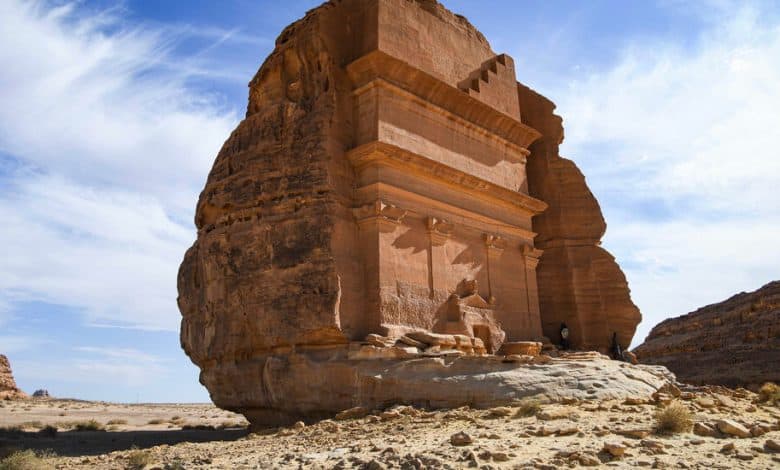Surprising, Unsettling, Surreal: Roaming Through Saudi Arabia










Stephen Hiltner/The New York Times
The sculpted facade of a 2,000-year-old tomb glows in the late-afternoon sun at Hegra, a UNESCO World Heritage site.
Crowds of Muslim pilgrims gather outside the Prophet’s Mosque in Medina.
Camels march through the desert on the outskirts of the Empty Quarter, the world’s largest sand sea.
For many years these Saudi Arabian scenes, including the lively open-air markets in Jeddah, were off limits to most travelers.
But not anymore. As it undergoes a profound transformation, Saudi Arabia is spending lavishly to lure tourists with its luxe new resorts …
… its rich cultural heritage …
… and its sublime natural beauty.
Can the Saudi government persuade would-be visitors to look past — or reconsider — its longstanding associations with religious extremism, ultraconservatism and human rights abuses?
Will the kingdom’s $800 billion bet on tourism pay off?
Supported by
SKIP ADVERTISEMENT
Surprising, Unsettling, Surreal: Roaming Through Saudi Arabia
Wandering alone along the southern fringes of Saudi Arabia’s mountainous Asir Province, some eight miles from the Yemeni border, in a nondescript town with a prominent sculpture of a rifle balanced on an ornately painted plinth, I met a man, Nawab Khan, who was building a palace out of mud.
Actually, he was rebuilding the structure, restoring it. And when I came across him, he hadn’t yet begun his work for the day; he was seated on the side of the road beneath its red-and-white windows — cross-legged, on a rug, leaning over a pot of tea and a bowl of dates.
Two weeks earlier, on the far side of the country, a fellow traveler had pointed at a map and described the crumbling buildings here, in Dhahran al-Janub, arranged in a colorful open-air museum. Finding myself nearby, I’d detoured to have a look — and there was Mr. Khan, at first looking at me curiously and then waving me over to join him. Sensing my interest in the cluster of irregular towers, he stood up, produced a large key ring and began opening a series of padlocks. When he vanished through a doorway, I followed him into a shadowy stairwell.
This, of course, was my mother’s worst nightmare: Traveling solo, I’d been coaxed by a stranger into an unlit building in a remote Saudi village, within a volatile border area that the U.S. Department of State advises Americans to stay away from.
By now, though, more than halfway through a 5,200-mile road trip, I trusted Mr. Khan’s enthusiasm as a genuine expression of pride, not a ploy. All across Saudi Arabia, I’d seen countless projects being built, from simple museums to high-end resorts. These were the early fruits of an $800 billion investment in the travel sector, itself part of a much larger effort, Vision 2030, to remake the kingdom and reduce its economic dependence on oil.
